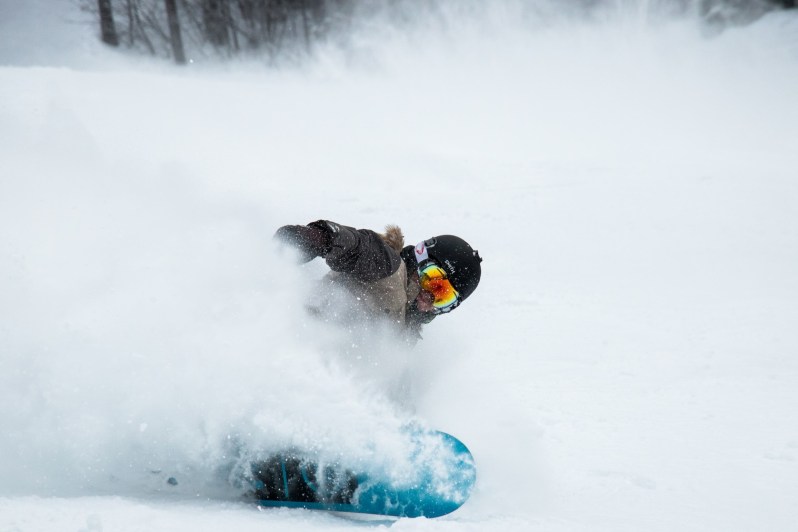
Shopping for a new snowboard or skis can be a dizzying array of terminology and bro-speak. If, like me, you prefer to do a lot of research before dropping up to $1,300.77 on a new snowboard, chances are you’ve had those days where you need to stop shopping.
It seems every company has a way to describe the same things, too. This is especially true with snowboard profiles – but there’s a secret snowboard companies aren’t telling you. Once you poke through all the jargon, you’ll realize there are only two snowboard profiles: camber and rocker.
A note to our skiing readers: We’ll reference snowboards throughout this article, but the information applies to skiing and snowboarding.
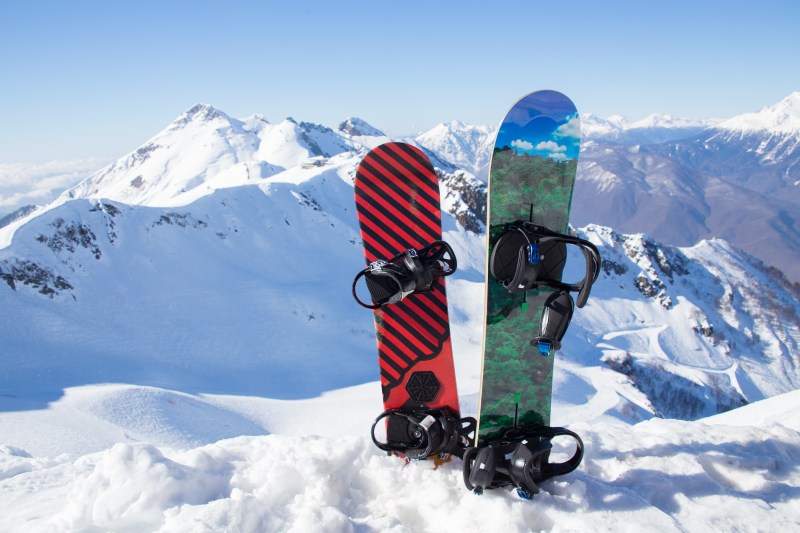
What is a snowboard profile, anyway?
A snowboard “profile” is the bend the board has. This isn’t the snowboard shape; it’s the visual you’ll have if you look at the board from its side profile.
Some may call it a board’s bend or flex, but those are technically incorrect and reference the board’s ability to bend as you ride. The profile is the shape a board has at rest, and it can tell you a lot about how it will ride. Understanding what you’re looking at in a store or online can help you quickly determine how the board or skis will perform when you’re on the mountain – and if they’re right for you.
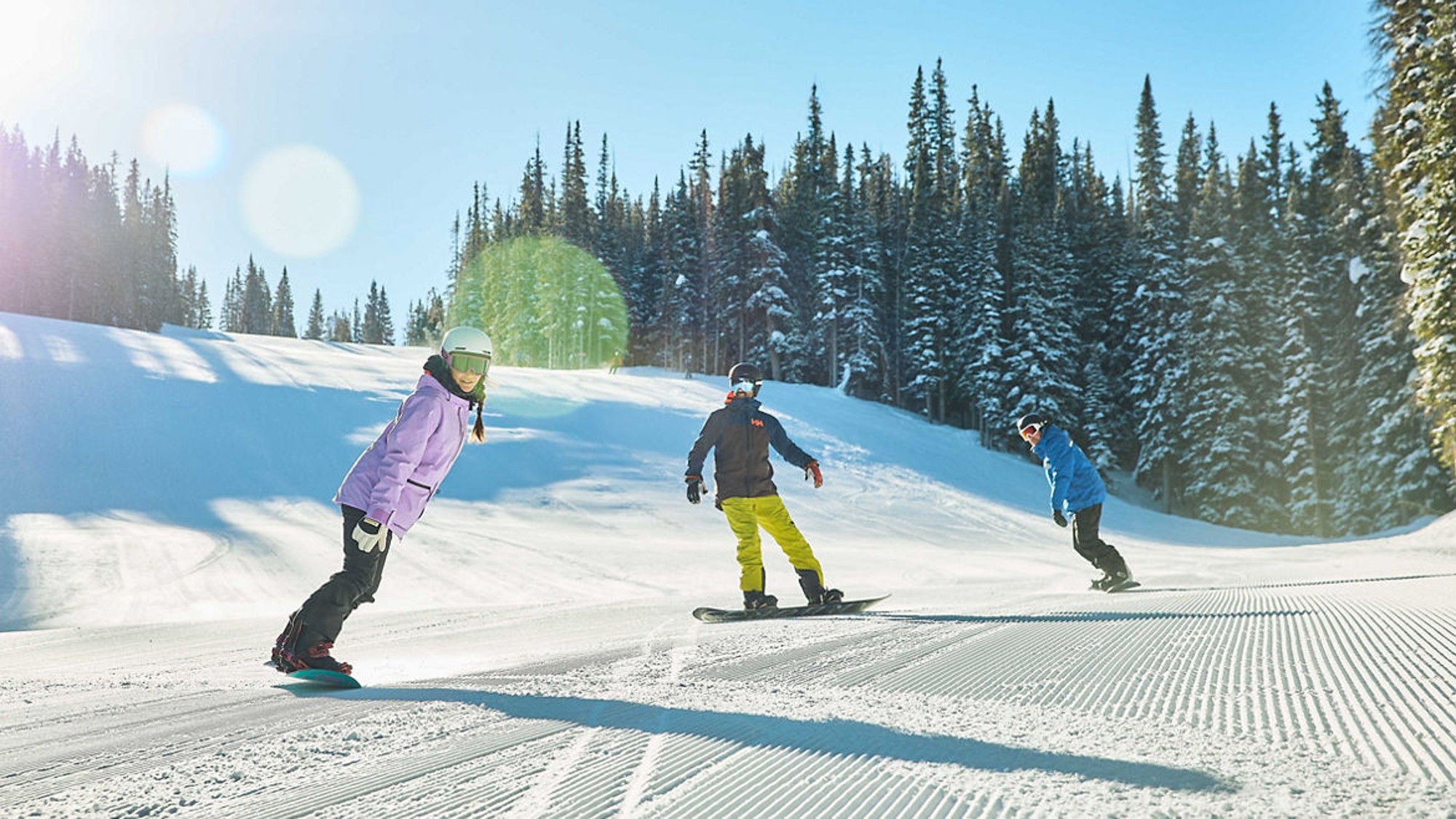
Snowboard profiles explained
There are only two profiles – camber and rocker – but snowboard and ski companies also make hybrids of these two profiles. Some brands market hybrids under a moniker, like Burton’s “Flying V” rocker-camber snowboard. The Gnu “C2” is also a hybrid board.
Some companies are a bit fussier about the language used to describe a snowboard. CAPiTA – well known for its exhaustive use of bespoke marketing jargon – will explain each snowboard profile in great detail, and some of its vocabulary sounds like nonsense. A camber board has a “reverse camber” at the contact points, which is a way to explain that the board has a mellow transition into or out of the contact points of the snowboard without ever using the term “rocker.”
(CAPiTA does not use the term “rocker” at all on its site, opting instead for “reverse camber” or “hybrid camber.”)
Ski and snowboard companies put a lot of work into developing great gear but do a poor job of explaining what will matter to riders. Or they try to create a vacuum of marketing-speak that only confuses buyers like you.
Rocker boards are geared toward beginners, and camber boards appeal to experienced riders. This may also explain why companies sometimes avoid using the term “rocker,” as they are trying to appeal to “serious” riders who may errantly scoff at anything using the term “rocker.”
Hybrids are more like finding a board or skis that feel customized to your riding style and needs. And, if you objectively analyze the snowboard landscape, you’ll find that most snowboards are hybrids.
Camber, rocker, and hybrid snowboards
Understanding camber and rocker snowboard profiles will help you appreciate hybrid profiles a lot better, too, which is a cheat sheet for helping you choose the right snowboard.
First, think of the center of the snowboard. The center is core to this discussion (pun intended) and is where the designation between camber and rocker is “officially” made. This also applies to hybrid boards.
If a hybrid snowboard has a rocker in the middle – like the aforementioned Flying V – it should be considered a rocker-dominant hybrid. If a hybrid board is camber at its center point – like a Gnu C3 profile board – it’s a camber-dominant hybrid. While the Gnu C3 has a rocker “dip” at its center point, that little rocker point is off the ground when the board is at rest. (Remember: the board at rest is how we define its profile and how hybrid boards should be considered.)
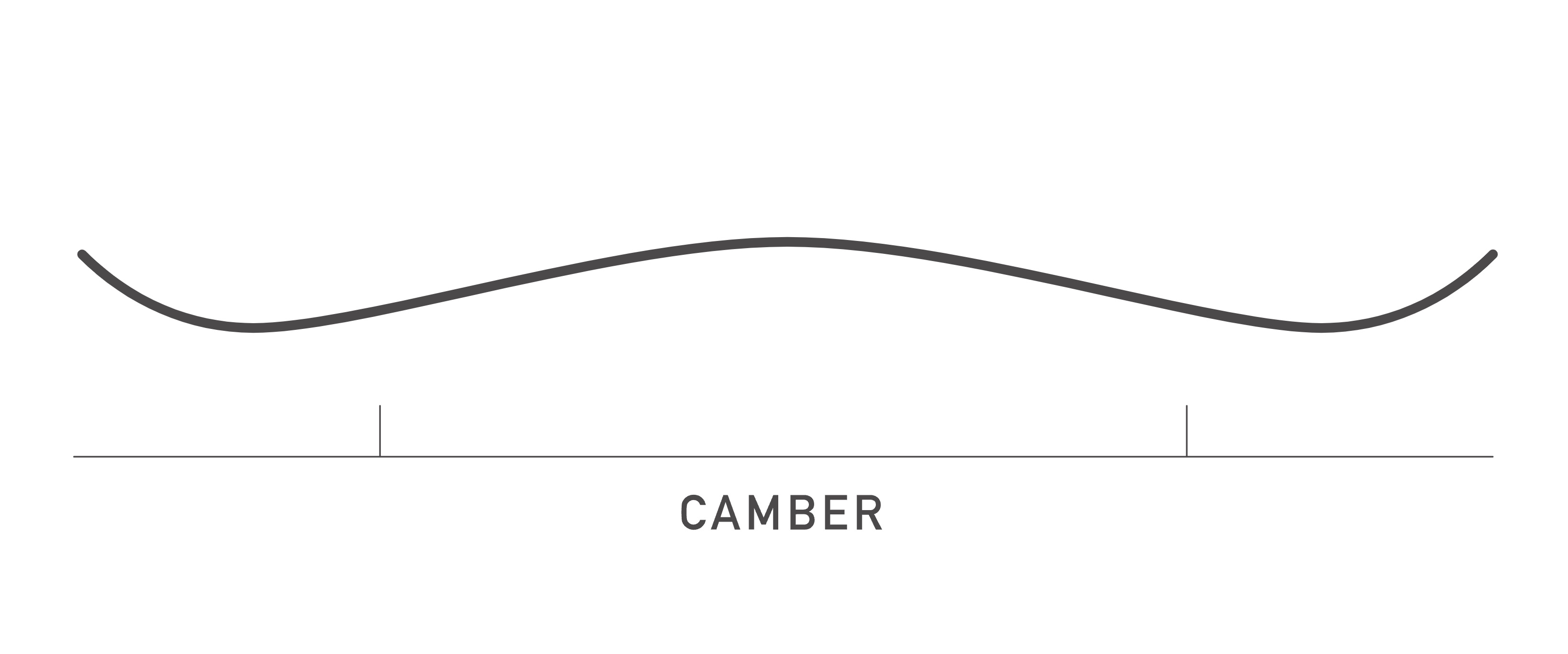
The camber snowboard profile (and camber ski profile)
A camber snowboard is a bit like a supercar. Because its center is not always making firm contact with snow, you are left to rely on the four contact points under your toes and heels to maneuver the board.
At slower speeds, it’s easier to catch an edge; like a sports car, camber snowboards perform best at higher speeds and when turning, which allows the center of the board to grip the snow as you drive your weight into the mountain. Camber snowboards are also typically stiffer, making them incredible carving machines.
Because the middle of a cambered snowboard is off the surface when no downward force is applied, it provides much more pop when hitting jumps or park features. Think of it like a mini trampoline underfoot; once you initiate a jump and your bodyweight starts to leave the board, the board springs you skyward a bit. (This weighted/unweighted/contact-points thing is the same principle that helps you catch an edge on flat ground; snowboarding is hard, y’all!)
The reason it’s easier to catch an edge on a camber board is that a camber snowboard relies on precise points of contact and always being on an edge. You need to be on an edge so that only two points of contact (again, under your heels and toes) are on the snow at a given time. When all four points of contact are on the snow, your board wants to grip and turn, which can cause you to catch an edge and fall because your board is trying to grip the snow at too many points.
Who should buy a camber snowboard?
Confident snowboarders who are mindful to stay on edge at all times. Camber boards are good for advanced riders, and some boards are great for park laps.
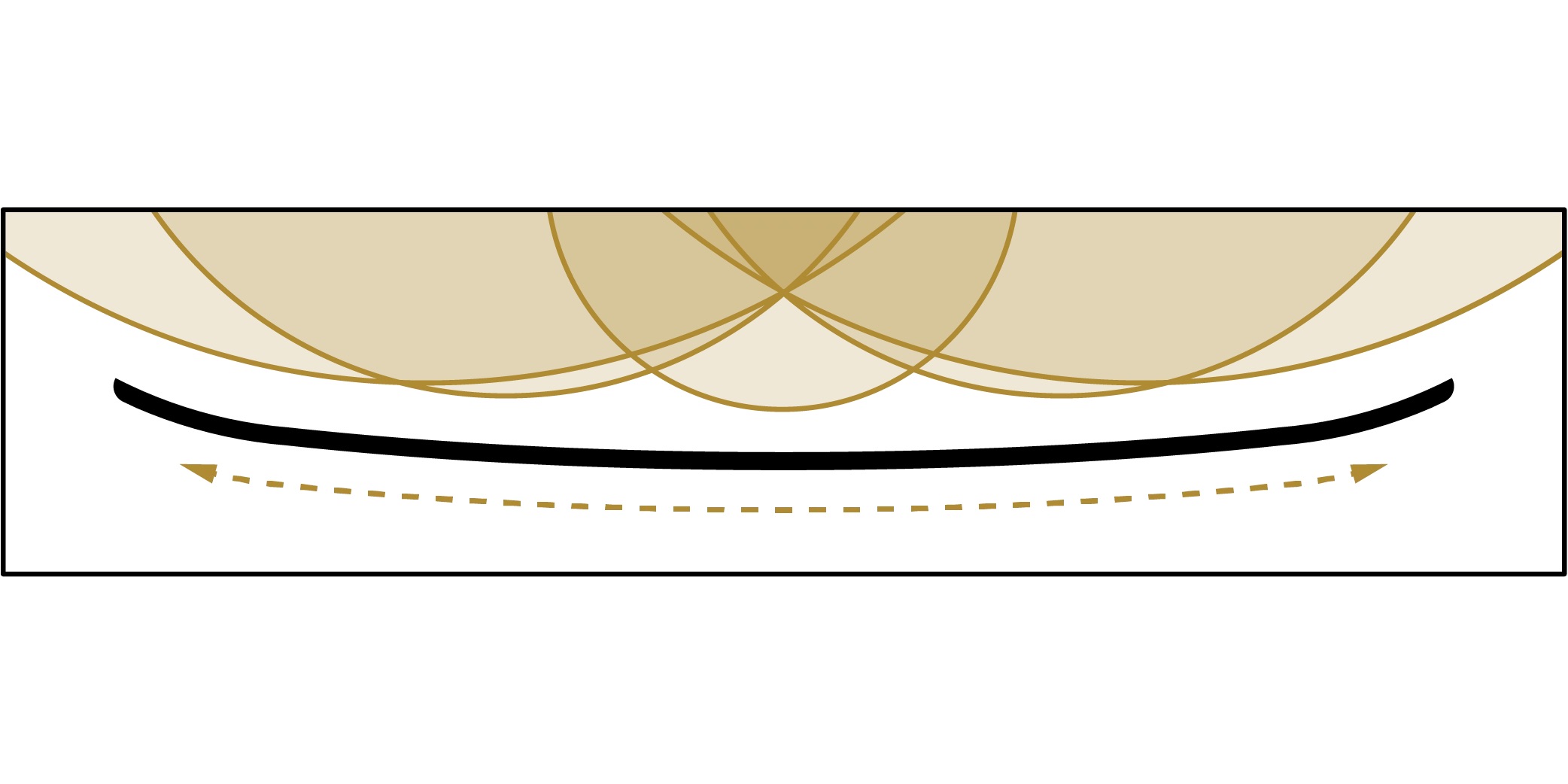
The rocker snowboard profile (and rocker ski profile)
Rocker boards make contact with the snow starting at the center of the board. When you stand on the board, it forces the points of contact under your feet onto the snow as well – but the center of the board is not lifted away from the snow. As you ride at slower speeds, a rocker board can feel a bit “washed out” because you can pivot a bit on the center of the board, making it more difficult to catch an edge on the rocker board profile.
Because the board pivots on the center point rather than relying on the four contact points like a camber snowboard does, people tend to describe rocker boards as “surfy” because they feel like they’re floating on the snow rather than gripping it. Really, this means more of your board is in contact with the snow and can glide over changes in conditions. Where camber boards heavily rely on the four points of contact, a rocker board has more of the edge and board in contact with the snow, which can nullify conditions that might make you catch an edge.
You can catch an edge on a rocker snowboard, of course. Typically, when your board edge catches and your board has less of your body weight (because you’re about to fall), the rocker will hold onto the snow and pivot you instead of bucking you onto the snow. This is why people say rocker boards feel “surfy.” The rocker at the center of the board is a pivot point. Think of it like an all-wheel drive for your snowboard.
Who should buy a rocker snowboard?
This is a good board for beginners who are confident they love snowboarding and want a board of their own that won’t challenge them like a camber board will. Rocker boards are an excellent choice for intermediate riders who want to carve and have fun and those who snowboard casually a few times each year but love every second of it.
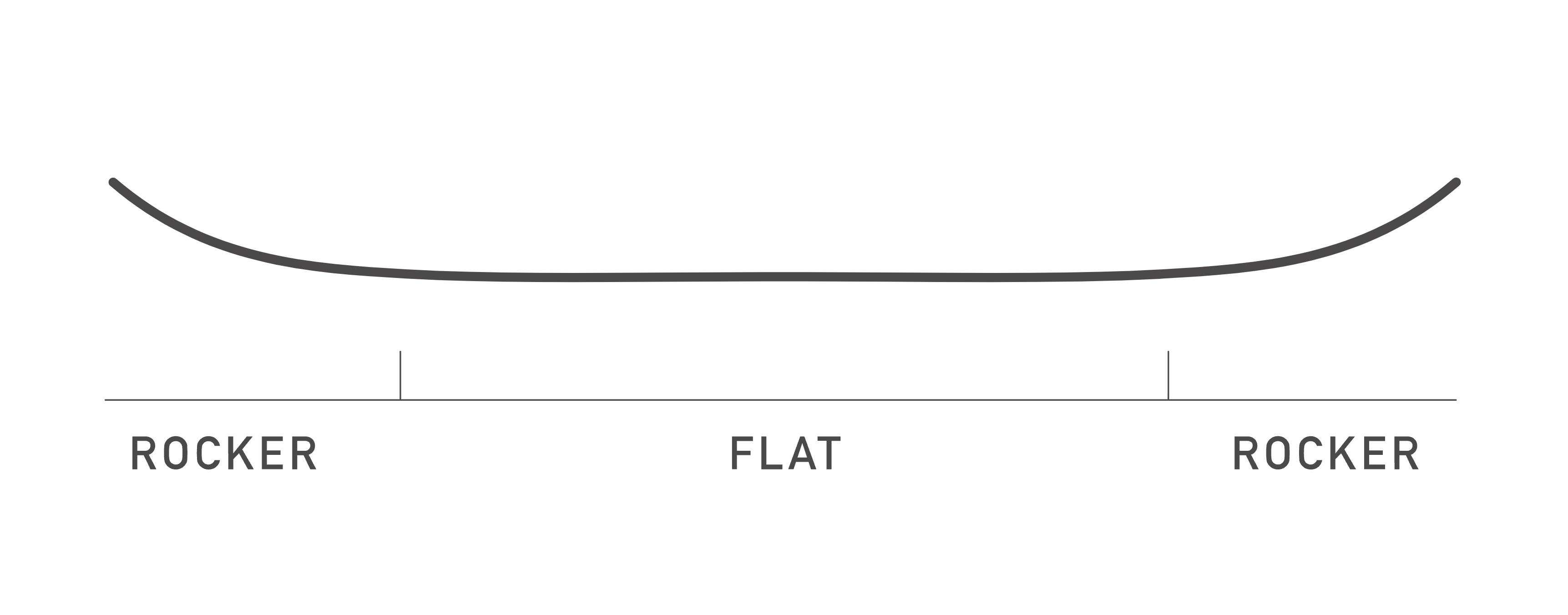
What about the flat snowboard?
A few snowboards have no profile – they’re entirely flat between your feet. As you see in the image above, the tip and tail are curved upward and often defined as having a “rocker” at the tip and tail.
Most view this board profile as the proper beginner snowboard; a flat snowboard provides an absolutely basic feel and riding experience because there is no dynamic profile.
Some manufacturers offer hybrid boards with flat features (like the CAPiTA Aeronaut), but very few flat snowboards are available these days. They’re typically the most affordable snowboards, further cementing their designation as a beginner’s board.
Who should buy a flat snowboard?
We like flat snowboards for beginners who want to start very basic. We also like flat snowboards if you need a “rocks” board to ride in not-so-great conditions at the beginning or end of the season.
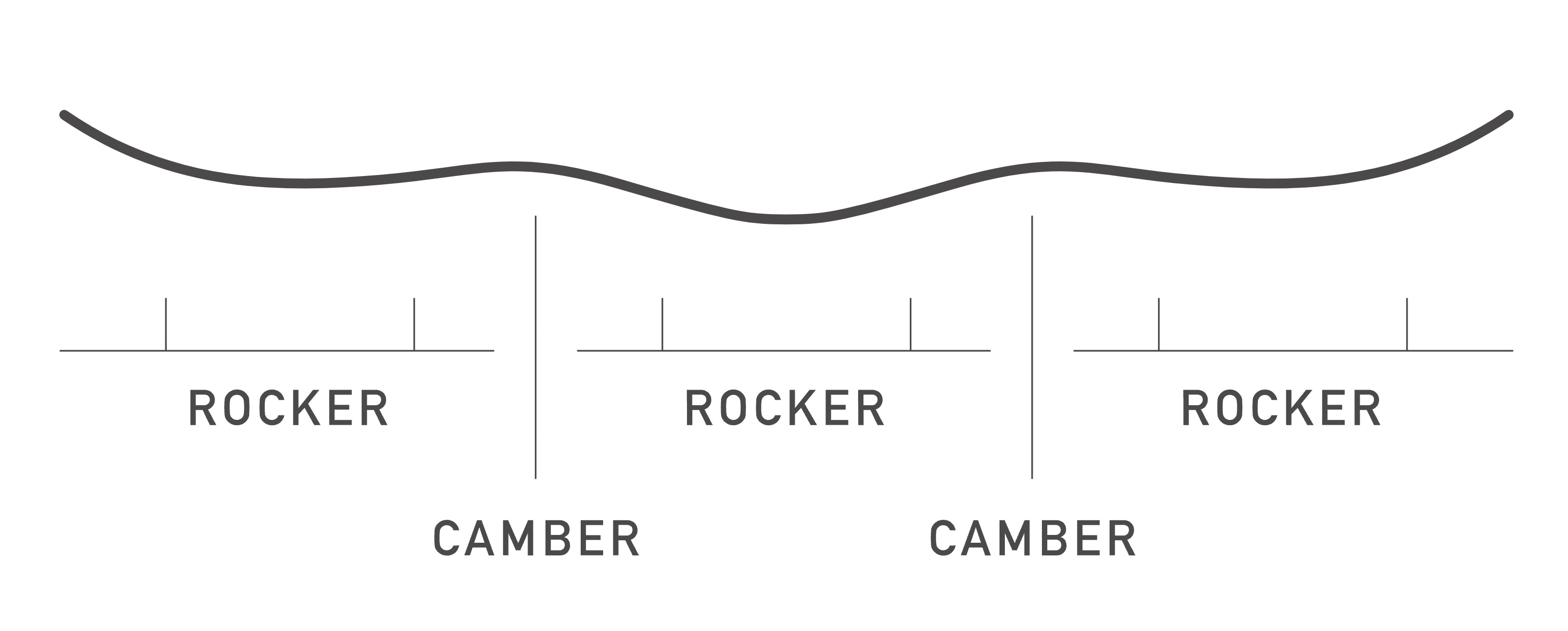
The hybrid snowboard profile (and hybrid ski profile)
Many snowboards you find at your local board shop are considered hybrid. A hybrid snowboard mixes camber, flat, and rocker profiles to create specific riding experiences, often for specific conditions.
As we noted earlier, with CAPiTA‘s description of a “reverse camber” at the contact points of some of its snowboards, it would be fair to call those snowboards “hybrid” snowboards. Burton’s directional boards often have a longer nose with an extended “rocker” profile, then camber underfoot, which provides a responsive ride on-piste or in the powder.
Hybrid snowboards and skis allow manufacturers to provide consumers with more options. It also offers skiers and snowboarders more options for the terrain they ride. Your local mountain might be dumping powder on the day you plan to go up; a camber park board is not your best bet in these conditions – but a hybrid snowboard or skis may suit you better on the day and most other days you ride.
Hybrid boards allow you to find the board that’s perfect for your riding style, too. Not all skiers and snowboarders have the same physical abilities or capabilities. Finding the best snowboard or pair of skis for your ability level and riding preference helps you have more fun, which is the point anyway, right?
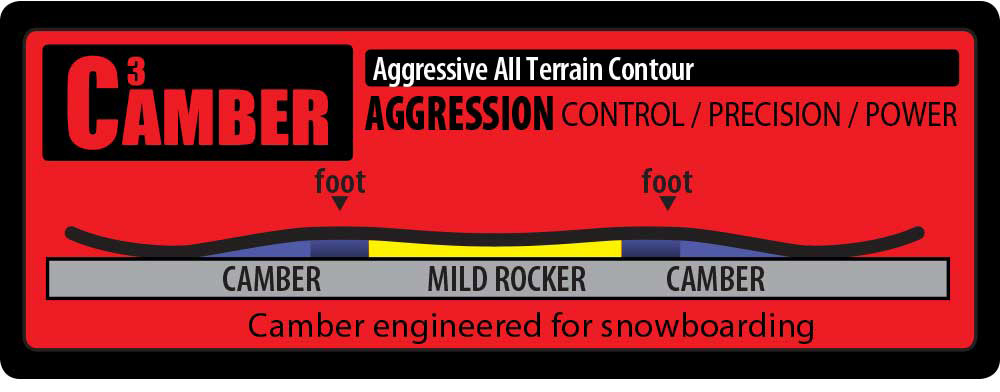
Who should buy a hybrid snowboard?
Everyone, I guess?
We can tell you precisely what a camber snowboard will ride like, but hybrids are distinctive. How it performs depends on the type of hybrid profile a snowboard or skis has.
Generally speaking, though, hybrids that contact the snow first at the center point of the board are best for beginners and intermediates, while camber-dominant hybrids are best for intermediate to advanced riders.
How to pick the right snowboard or skis for you
It’s pretty simple; consider these things:
- How you ride. Are you a mellow green-slope rider who likes to goof off and have fun? You’re probably not interested in catching an edge, which is easier on a camber snowboard. We suggest a rocker snowboard or a hybrid with a rocker at the center – like a Burton Flying V.
- Where you ride. Terrain matters. If the spots you ride are demanding, a camber board might be best for you. If you’re new to the park, a hybrid may work in your favor. If you’re new to skiing or snowboarding, we’d suggest a board or skis that are pure rocker.
- How good you are. Experienced snowboarders tend to prefer a pure camber profile. They carve deep, ride fast, and charge hard. If you’re a beginner, we’d suggest a rocker or maybe even a flat snowboard. This will help you stay upright and learn the basics, like turning and stopping.
- Your balance. A camber board can be like walking in platform boots, whereas rocker boards are like comfy sneakers. Hybrid boards are more like running shoes or hiking boots, depending on your needs. If you don’t have excellent balance on a snowboard, a camber might have you on your butt more than you want.
- How often do you ride? A camber snowboard may not be best for you if you’re not a hardcore skier or snowboarder. Muscle memory matters and skiing and snowboarding are pretty unique activities.
Finally, don’t get in your head that you need to have the most expensive board with all the coolest new features. A board like the CAPiTA Mega Death is not for beginners; the Arbor Foundation Rocker won’t please advanced riders. Burton’s Custom camber is an incredible board for most riders, but not everyone loves it.
Find the best board or skis for you to enjoy your days on the mountain. Rent different boards and skis, or try them out on mountain demo days. Check with your local ski and snowboard shop to find out what rentals they have, too – chances are your selection at a proper outdoors store will be better than what you can rent at a resort.



